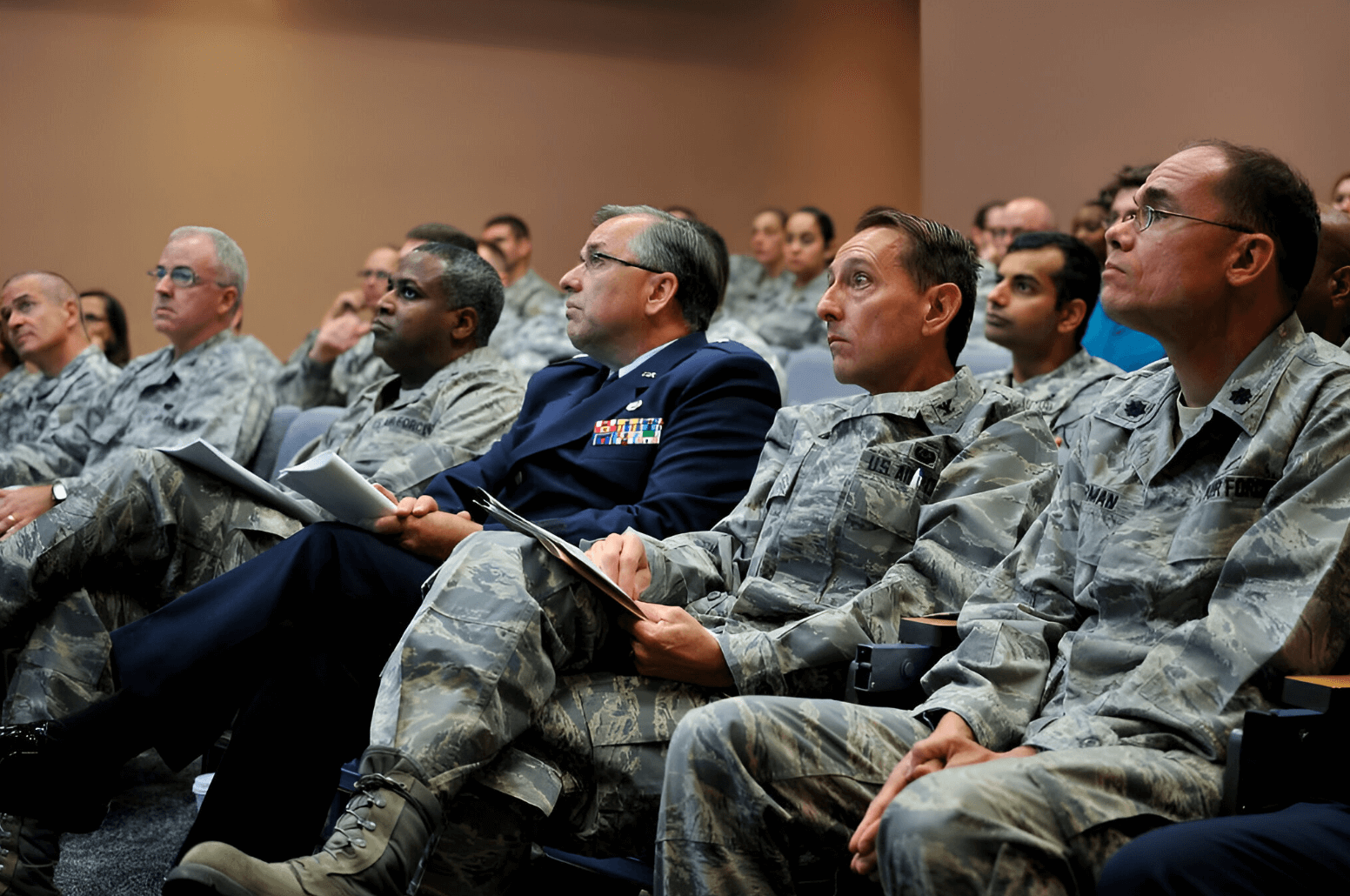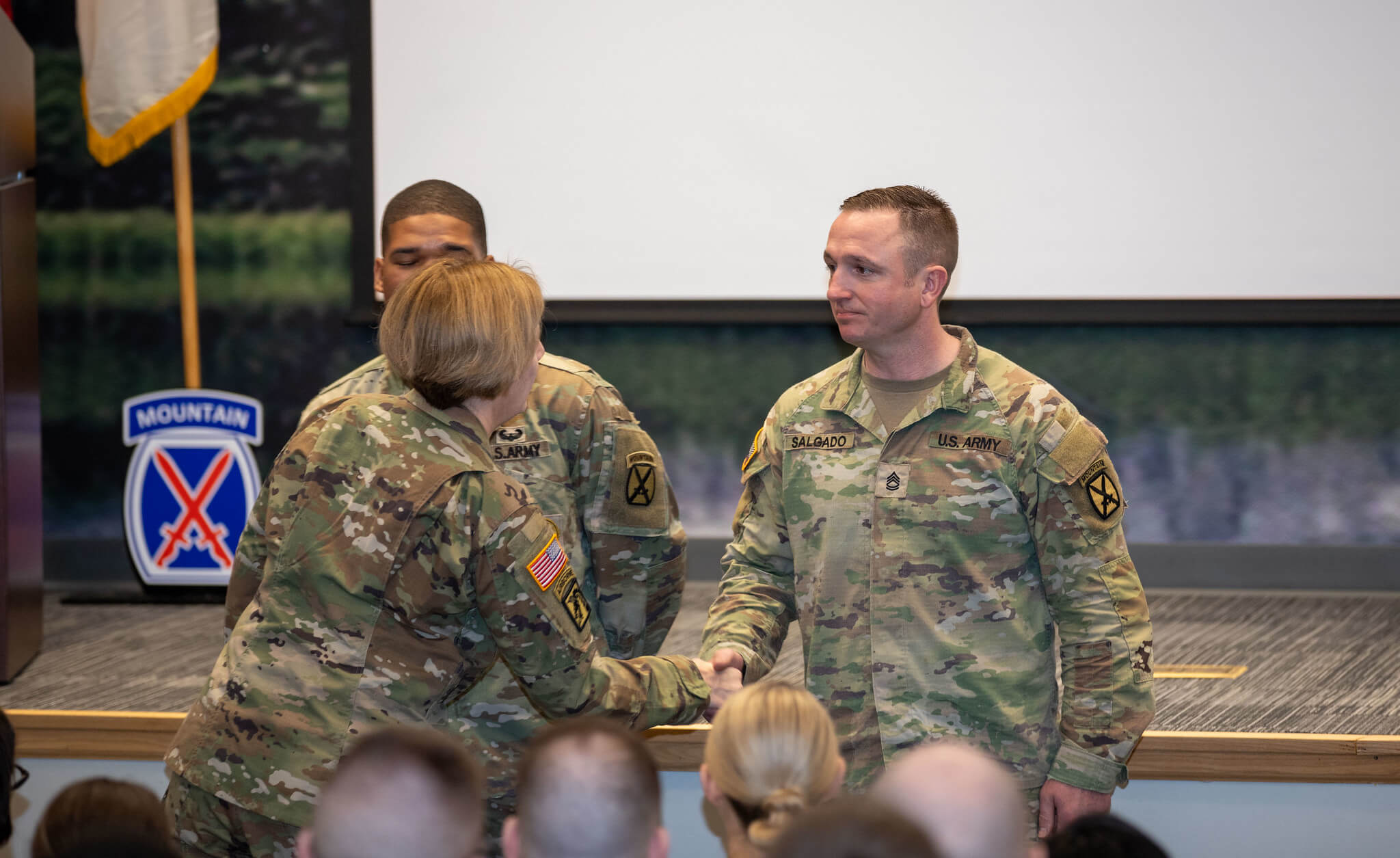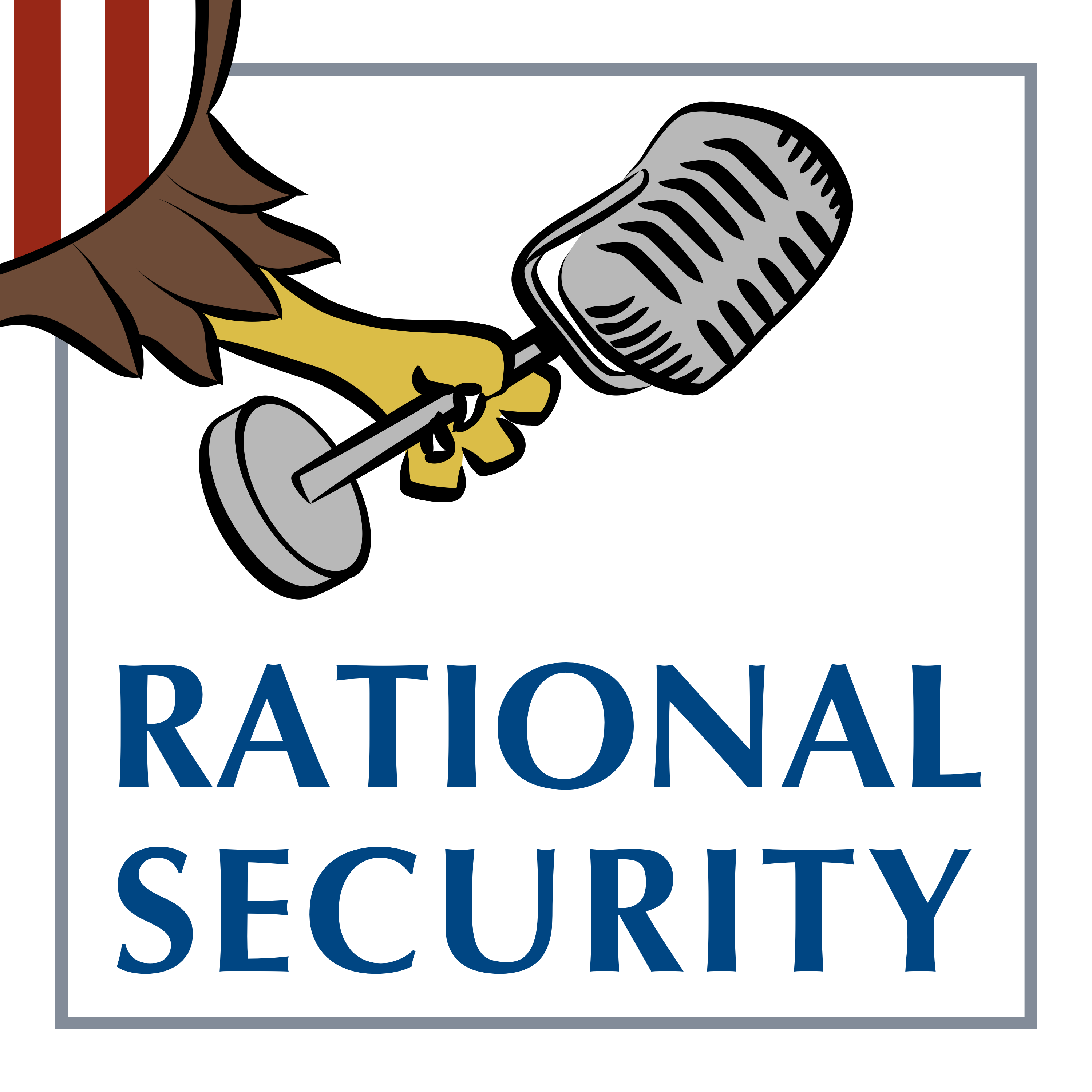Congress Must Protect the Role of JAGs in the Military

Published by The Lawfare Institute
in Cooperation With

Recent reporting indicates that United States Secretary of Defense Pete Hegseth—certainly no fan of the military rules of engagement (ROE) and international law of war—has directed a new key member of his staff to oversee “a sweeping overhaul of the judge advocate general’s corps as part of an effort to make the US military less restricted by the laws of armed conflict.” If current Trump administration practice is precedent, this reform will radically reimagine the role of judge advocate officers (JAGs) at the tactical and operational headquarters across the armed forces.
In her recent article, Sarah Harrison explained why modifying the JAG’s traditional role as both a law of war adviser and prosecutor will create high risk for the lawful use of military force both abroad and here in the United States. Amplifying Harrison’s warning, I elaborate on the entwined issues of compliance with the fundamental principles of the law of war, the doctrine of command responsibility, and the rules of engagement. These concepts are inextricable from the professional expertise and counsel expected of JAGs. Because Congress has unquestioned constitutional authority to protect both JAGs and the principles they seek to preserve, I propose two ways in which Congress can and should block this reform with two relatively straightforward statutory additions.
Context for the Reform
“Radical reimagining” is perhaps too anodyne a description. Hegseth commissioned his personal lawyer, Tim Parlatore, as a JAG officer in the Navy Reserve at a rank typically reserved for those who have served for nearly two decades. While Parlatore did graduate from the U.S. Naval Academy and served for several years, the whole of his experience practicing law has been as a civilian; it is not clear whether he has received any of the training required of new Navy JAGs at the Naval Justice School. What’s more, Parlatore represented Chief Petty Officer Eddie Gallagher, who infamously committed multiple atrocities but was later granted clemency by President Trump in his first term, in part due to the advocacy of Pete Hegseth, then of Fox News.
Taking Hegseth’s recent statements about the role of judge advocates at face value (he dismissively denigrated them as “jagoffs” during his Senate nomination hearing); his reasons for firing the service judge advocates general (TJAGs) (they would act as “roadblocks” to the administration’s plans); his well-known lack of respect for the value of the laws of war and the “restrictive rules of engagement” (he wrote: “[S]hould we follow the Geneva conventions …. Aren’t we just better off in winning our wars according to our own rules?”); and finally his public support for the few service members who were lawfully prosecuted and convicted for what amounted to war crimes in Iraq and Afghanistan—and what he likely has in mind is closer to an act of reckless institutional self-harm than it is mere reform.
As the initial report of Hegseth’s reform plan reveals, “[t]he overhaul of the Jag corps will be aimed at retraining military lawyers ... so that they provide more expansive legal advice to commanders to pursue more aggressive tactics and take a more lenient approach in charging soldiers with battlefield crimes.” First, top-down directives about the content of legal advice JAGs provide to commanders before and during operations would put to question JAGs’ fidelity to the Constitution, their state bar rules of professional conduct, and their compliance with military rules for lawyers. Moreover, it would violate 10 U.S.C. § 9037, a statute designed to ensure JAGs’ independent advice to the chain-of-command.
Second, even if this justification is the entire truth, it is hard to understand why Hegseth would fire Lt. Gen. Joe Berger as the Army’s TJAG, who recently co-wrote this article in the Army’s premier professional journal “to provide commanders ... with the confidence to assume prudent risk in the application of lethal force under permissive ROE” in the large-scale combat operations for which the U.S. military is constantly training. And to complicate matters further, any assumption that JAGs at the tactical level would act as bulwarks against improper or unlawful orders is suspect, a problem that I articulated recently, describing the structural impediments lower-ranking JAGs face with advising commanders and staff on how to fit their missions, means, and methods within the limits imposed by international law of war using ROE, especially if commanders believe they have received an unlawful order.
But to fully appreciate why the risk of disturbing the current role of JAGs is so high, it is important to understand what is at stake. This can be considered in three interrelated categories: the law of armed conflict principles, the doctrine of command responsibility, and the rules of engagement.
Law of Armed Conflict (LOAC) Principles
It is unnecessary to explain in detail here the extent to which the laws of war govern warfighting. As Harrison notes, the Department of Defense’s Office of the General Counsel publishes its own Law of War Manual to explicate the nuances of international law norms, treaty obligations, and customs applied across the full spectrum of combat operations—from humanitarian assistance, to counterinsurgency, to “large scale combat operations” fought between adversarial nation-states. But regardless of which portions of the international law of war apply in a given conflict, there are well-known, perhaps irreducible axioms of legal warfare referred to as the “principles” of the law of armed conflict (the LOAC principles). These are recognized as fundamental not only by the international community but by the Department of Defense itself, which claims them as guiding lodestars. And while the precise list and terminology of the principles a bit depending on the country, they are held as the basis for the specific rules encoded in the Geneva and Hague conventions, and they help fill the gaps in meaning if a specific rule does not seem to map directly onto a novel situation. The U.S. considers five LOAC principles, which are generally interpreted in similar ways by the international community:
- The principle of military necessity prevents arbitrary use of military force—that is, destruction for the sake of destruction rather than a legitimate military objective.
- The principle of distinction restrains militaries from the indiscriminate use of weapons and tactics that pose a real danger that civilians and civilian property—rather than the enemy’s armed forces—end up as the war’s primary victims.
- The principle of proportionality forbids the use of force that would cause collateral (“incidental”) harm to civilians or damage to civilian property that would be “excessive in relation to the concrete and direct military advantage anticipated.” It does not ban collateral damage; it bans an unjust weighing of the cost of collateral damage against the military benefit from using force at that time and place.
- The principle of humanity (also called the principle of [preventing] unnecessary suffering) prohibits using weapons or tactics that are designed to cause, or used in such a way as to cause, superfluous injuries against the military adversary.
- The principle of honor serves as a sort of meta-principle: It demands that parties to a conflict accept certain legal limits on their ability to conduct hostilities (like those reflected in the other four LOAC principles and other express prohibitions and duties), that they will comply with those limits in good faith, and that each party can trust the other to comport themselves according to those rules out of general adherence to “fairness.” This principle undergirds the prohibitions on perfidy, for example, like feigning a surrender only to ambush the opposing force.
These principles are drilled into the brains of new judge advocate officers during their initial schooling and are reinforced over a career of continuing legal education, including the Army JAG Corps’ ABA-recognized LL.M. program for mid-career JAGs. (Prior to retirement from active duty, I helped teach the law of armed conflict as a professor at the Army’s JAG School). But a parallel element of learning these principles is learning how to communicate their importance and continuing vitality to non-lawyer commanders and troops down to the most junior in rank and responsibility. The principles constitute the redline that no military action can lawfully cross, regardless of how “mission critical” the target is deemed to be.
But the ultimate responsibility for enforcing these principles is not with the JAGs at all: It is with the chain of command. That chain runs (in the Army, for example) from the tactical level of the squad, platoon, and company all the way up through the battalion, brigade, division, corps, task force, combatant command, and to the secretary of defense and the president.
Command Responsibility
It is axiomatic in the military that everything that happens (good or bad) in a unit is ultimately the responsibility of the leadership. That does not mean that the actual wrongdoers are immune from liability or responsibility for crimes; but it does mean that commanders cannot escape liability merely because they weren’t there and did not commit the crime as a principal. This axiom is known as the doctrine of command responsibility, and it is fully rooted in the history and tradition (to borrow a phrase well-known to lawyers) of American warfare and military law—in fact, it is embedded in warfare across cultures and eras. The doctrine is encoded in the 1977 Additional Protocol (I) to the Geneva Conventions (Articles 86 and 87), in the Rome Statute for the International Criminal Court (Article 28), in the norms of customary international law, and enforced in international war crimes tribunals.
In American military practice, it is ubiquitous. The doctrine was endorsed by the U.S. Supreme Court in the post-World War II war crime tribunal, In re Yamashita. It is described in the Defense Department Law of War Manual (Section 18.23.3) and in the Army Field Manuals and Regulations, and it is implied by federal law that demands “exemplary conduct” by commanding officers, requiring that they “be vigilant in inspecting the conduct of all persons who are placed under their command ... [and] guard against and suppress all dissolute and immoral practices, and to correct, according to the laws and regulations of the Army, all persons who are guilty.”
In a nutshell, the doctrine holds that commanders (interpreted loosely to mean any leader with duties of sufficient scale of responsibility for others) must supervise and control subordinates’ observance of the LOAC with appropriate actions, and that—under certain conditions— commanders face criminal liability when those subordinates violate LOAC. For instance, this would be the case if the commander ordered the conduct that was itself a LOAC violation; disregarded allegations or evidence of a LOAC violation of which he or she was aware or should have been aware; took no action to investigate and punish suspected LOAC violations; ignored actual knowledge of the LOAC violation; incited the LOAC violation; acquiesced to the LOAC violation; or otherwise failed to control troops who were committing LOAC violations. Whether a commander “failed to control” is a matter of whether they took “appropriate action” understood to mean “necessary and reasonable measures” to ensure their subordinate troops complied with the LOAC.
Rules of Engagement
Rules of engagement are a primary mechanism for ensuring that troops under that commander’s authority stay clear of crossing the LOAC redlines. Rather than being lauded as the “necessary and reasonable measures” that they are, Hegseth has criticized the ROE as being overly restrictive and risk-averse, suggesting that these rules hamstring effective combat operations and lead to unfair prosecutions of soldiers just doing their jobs under extraordinarily hostile conditions. But the ROE are not a product of JAGs; JAGs play a major role in formulating them, but only in concert with operational planners—the experts in the tactical use of force to achieve military objectives—and only with the approval of the commander who signs the mission order to which the ROE are attached.
These ROE are the product of three elements: the requirements of the mission itself, policy as determined and influenced by legitimate civilian authority, and the laws of war (which are ultimately derived from the LOAC principles described above). ROE are therefore continually evolving because two of those three elements are constantly shifting over time; only the laws of war remain relatively static and therefore remain a redline minimum that the ROE cannot sink below. For instance, killing, maiming, or torturing a detained combatant could never be authorized or permitted by the ROE no matter how “aggressively” the administration wishes to conduct a counter-terrorist campaign, and no matter how compelling or important that detainee is to the specific mission of that unit. It was for these reasons that former Navy SEAL Gallagher was prosecuted by court-martial (as were the three junior Army officers—Michael Behenna, Clint Lorance, and Matthew Golsteyn—also accused of battlefield misconduct, who received pardons from Trump).
But as I’ve described previously, a unit’s ROE are ultimately derived from more generic standing rules of engagement (SROE), which are infrequently published (the most recent were in 2005) by the office of the chairman of the Joint Chiefs of Staff. The purpose of the SROE is to provide a minimum catalogue of required control measures through which operational commanders wield the incredible amount and variety of armed force against other combatants. They are designed to be augmented (“supplemented”) by the chain of command, and must follow established procedures, based on operational conditions, new missions and threats, and evolving policy considerations.
But certain key components of the SROE are not or should not be modifiable, for they reflect compliance with the core LOAC principles of distinction, necessity, proportionality, humanity, and honor described earlier. As the unclassified Enclosure A to the SROE states in paragraph 1.d., “U.S. Forces will comply with the Law of Armed Conflict during military operations involving armed conflict, no matter how the conflict may be characterized under international law, and will comply with the principles and spirit of the Law of Armed Conflict during all other operations.”
It is the task and responsibility of the hundreds of JAGs—stationed aboard aircraft carriers, at airfields, in Joint Operations Centers, at Joint Special Operations Task Force units, and at maneuver division and brigade headquarters—to help interpret lawful mission orders from higher headquarters and build plans and orders that meet the mission intent from above. At the same time they must unswervingly comply with the SROE fundamentals and LOAC principles, not to mention the other relevant and binding international law, federal law, and regulations for which these JAGs are expected to be the headquarters’ staff experts (as this Defense Department doctrine elaborates on page III-53).
While it is too soon to know for certain what specific steps Parlatore and Hegseth will take, nearly anything they likely envision will marginalize the necessary and appropriate role of the JAGs at the tactical level; elevate “permissiveness” as a guiding principle within the rules of engagement; erode respect for the role that the law plays in regulating the use of armed force; and increase the risk that American service members will commit acts that violate international law—acts that will be less transparent to the American and global public and will go unpunished. All of these are true calamities because they undermine the credibility and reputation that the American military has built over generations—not just for its technical overmatch, but for how it fights with honor and respect for the law.
Nevertheless, each calamity is entirely preventable. But prevention, under these circumstances, requires Congress to use its rightful constitutional authority to “make rules for the government and regulation of the land and naval forces.”
Protecting JAGs Should Be an Imperative for Congress
In view of the dangers posed by “overhauling” how JAGs support commanders and reinforce this country’s compliance with the rule of law, Congress should understand that these dangers cross political divides and represent an existential threat to core values of military discipline, integrity, and honor. Congress can take action to prevent those dangers in a couple of ways.
First, Congress should amend 10 U.S.C. §§ 7037(e)(2) (addressing Army JAGs), 8046(d)(2) (Marine Corps JAGs), 8088(e)(2) (Navy JAGs), and 9037(f)(2) (Air Force JAGs). These provisions currently prevent all officers and employees in the Department of Defense from “interfering with” the “ability of judge advocates ... assigned or attached to, or performing duty with, military units to give independent legal advice to commanders.” As mentioned above, Hegseth’s apparent plan is to do exactly this, under a misguided belief that it will increase the lethality and combat effectiveness of the military. Such an effort may very well increase lethality, but it will also decrease the U.S. military’s credibility and American legitimacy when it fights because it will remove the primary means by which commanders and troops can be confident that their operations are lawful. Congress should amend the current generic anti-interference statute to add:
Military units planning and conducting operations under the authority and direction of the President and Secretary of Defense shall include within the unit commander’s special staff a qualified judge advocate officer or officers to provide legal advice and input consistent with Joint Publication 3-84 and associated service-specific regulations and doctrine current on the date this provision is enacted into law.
Such a requirement is not out of left field. As to personnel, Congress already requires that courts-martial personnel include a JAG as the prosecutor, defense counsel, and military judge, a novel constraint on executive authority at the time it was enacted because it precluded commanders and other non-lawyers from the historical practice of serving temporarily in these roles, which was seen as denying fundamental due process protections to service members accused of crimes. As to a requirement tied to an existing Department of Defense publication, Congress did this in 42 U.S.C. § 2000dd–2 when it limited interrogation methods to only those listed in the Army Field Manual on human intelligence collection. Both requirements would ensure the Defense Department does not subvert existing congressional intent on the independence of uniformed legal advisers.
Second, Congress should require a regular update to the SROE, with both classified and unclassified versions submitted to Congress as a matter of basic oversight, for the same reasons Congress already requires the chairman and secretary to submit certain planning and strategic documents to the oversight committees (for example, this reporting requirement in 10 U.S.C. § 153(b)(3)). Congress can—without breaching “separation of powers” and stepping on the commander in chief’s war-waging prerogatives and discretion—require that the SROE and any derivative ROE at the tactical and operational levels emphasize that under no circumstances may the SROE or derivative ROE be interpreted so as to violate the United States’s obligations under the laws of war or inconsistently with the internationally accepted LOAC principles described above.
This should not be too onerous a requirement for the Defense Department, as it already asserts that it has and will continue to comply with the laws of armed conflict and their fundamental principles in all military operations. It is also fully consistent with Article 18 of the Uniform Code of Military Justice (UCMJ), which envisions prosecutions of both U.S. service members and enemy combatants for law of war violations, as well as 18 U.S.C. § 2241, which has even broader jurisdiction than the UCMJ. By encoding it in statute, Congress would reiterate the American public’s expectation that the Defense Department will continue to fulfill such promises.
***
JAGs are commissioned officers and licensed attorneys, having sworn the same oath to support and defend the Constitution as every other military officer. They are not only versed in military-specific laws and regulations but also trained in the somewhat arcane art and process of operational planning. They are not appendages to the organization; they are instrumental components of a complex organization that integrates lawyers into planning and that prides itself on fighting “with honor” while making every effort to fully comply with the international laws of war that the U.S. itself helped write. JAGs are not, despite Hegseth’s self-defeating view, on a zealous and personal mission to slow down and impair real warfighters. JAGs are present on the front line, risking their lives like everybody else, not an oversight committee or a police department’s internal affairs bureau. They are lawful combatants, members of two unique professions, each with its own demanding ethos, cultural norms, standards, obligations, duties, and responsibilities.
Hegseth would see these two professions and their characteristics as natural enemies. Both the Defense Department and international law have long recognized that the legal profession is integral to the just, lawful, and effective execution of the military profession’s duties. Congress has the means—and ought to have the will—to protect JAGs and ensure that all rules of engagement comply with the law of armed conflict in the face of the defense secretary’s current attacks.





